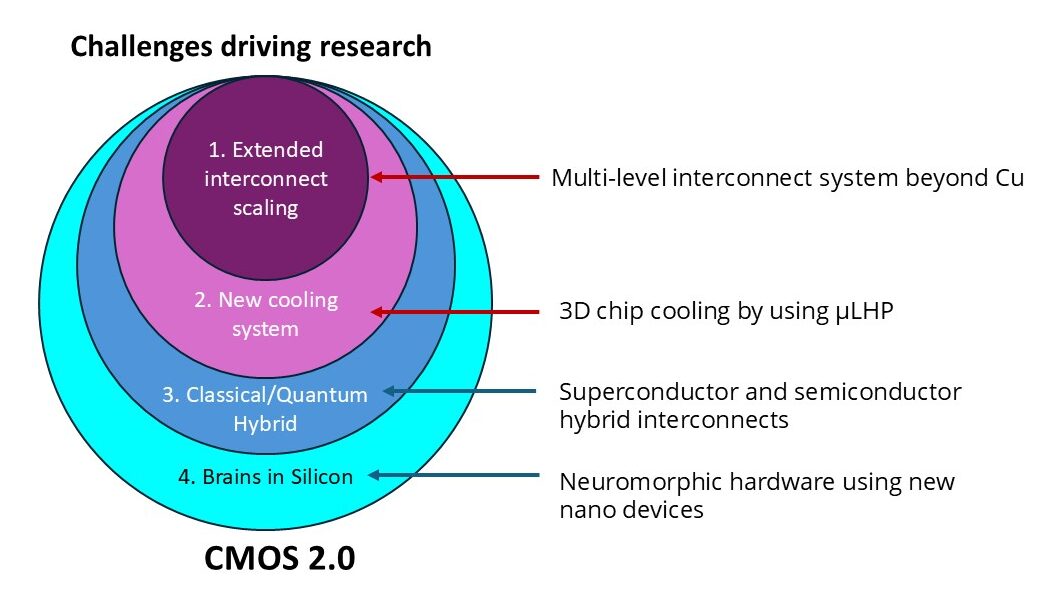Heterogeneous Integrated systems
Let’s create the best design and function for integrated systems together


research activity-1
Multi-level Interconnect System
By combining multi-level interconnects and on-chip nanodevices, we can realize an energy-efficient monolithic computing system. In scaled CMOS BEOL (back-end-of-the-line) technology, the increasing resistance of Cu interconnects is a serious bottleneck to enhancing system performance through scaling. In this lab, we focus on exploring alternative materials to replace Cu, as well as researching and developing new nanodevices integrated into the BEOL.
research activity-2
Brains in Silicon
Neuromorphic computing is a branch of computing inspired by the architecture and functioning of the human brain. The term neuromorphic is derived from neuro (related to neurons) and morphic (related to form or structure). The goal of neuromorphic computing is to design and build computer systems that achieve more efficient, brain-like computation. In this lab, we focus on neuromorphic hardware using electrochemical resistive switching devices (e.g., NanoBridge).
research activity-3
3D-stacked Chips Cooling system
A new advanced chip cooling system is under development in TADA Lab. Active cooling functions are being designed inside silicon chips. The 3D stacking of high-performance computing (HPC) chips will soon be realized using our original micro-cooling system!
research activity-4
Quantum/Classical Hybrid System
Quantum computers use qubits, which can exist simultaneously in two states (e.g., |0› and |1›), enabling them to execute certain algorithms faster than classical computers. A superconducting transmon, similar to an artificial atom, is one of the practical candidates for quantum computing systems, as its state can be manipulated by radio-frequency (RF) pulses. To minimize the impact of thermal noise on the qubit state, transmons are placed at the millikelvin stage of a dilution refrigerator and carefully controlled. To scale up the number of qubits, cryogenic electronics based on complementary metal–oxide–semiconductor (CMOS) technology is considered a promising approach to overcoming current bottlenecks.